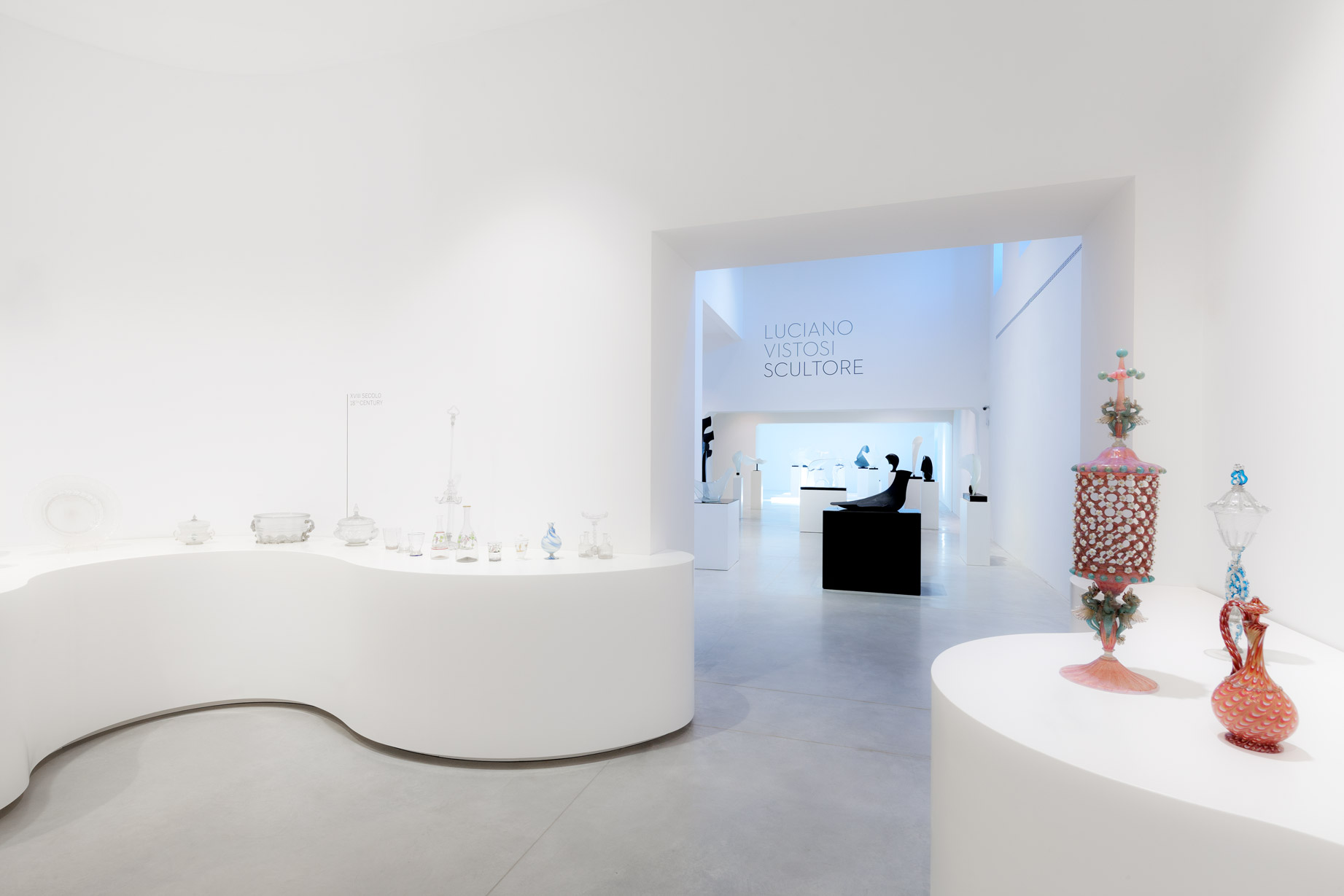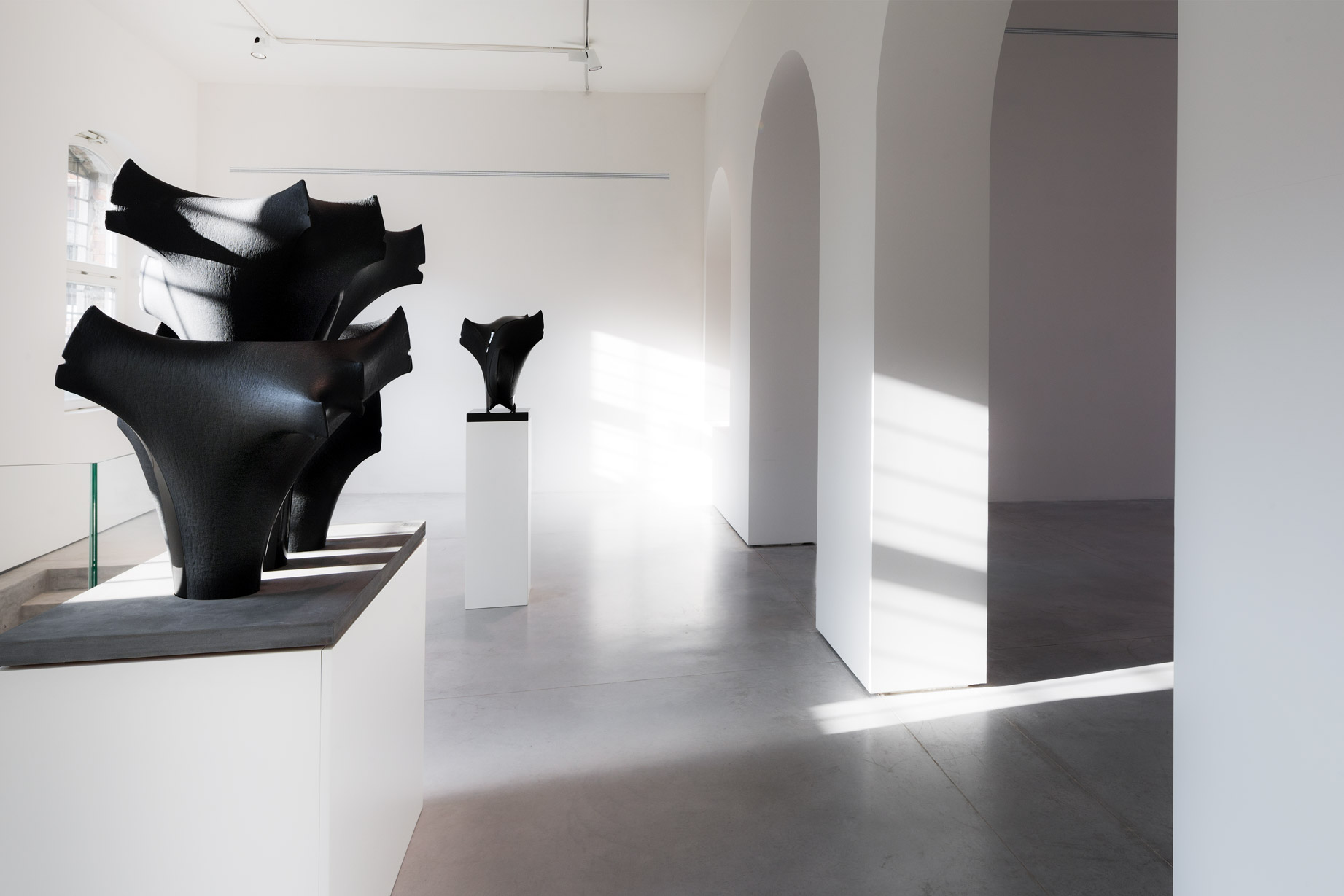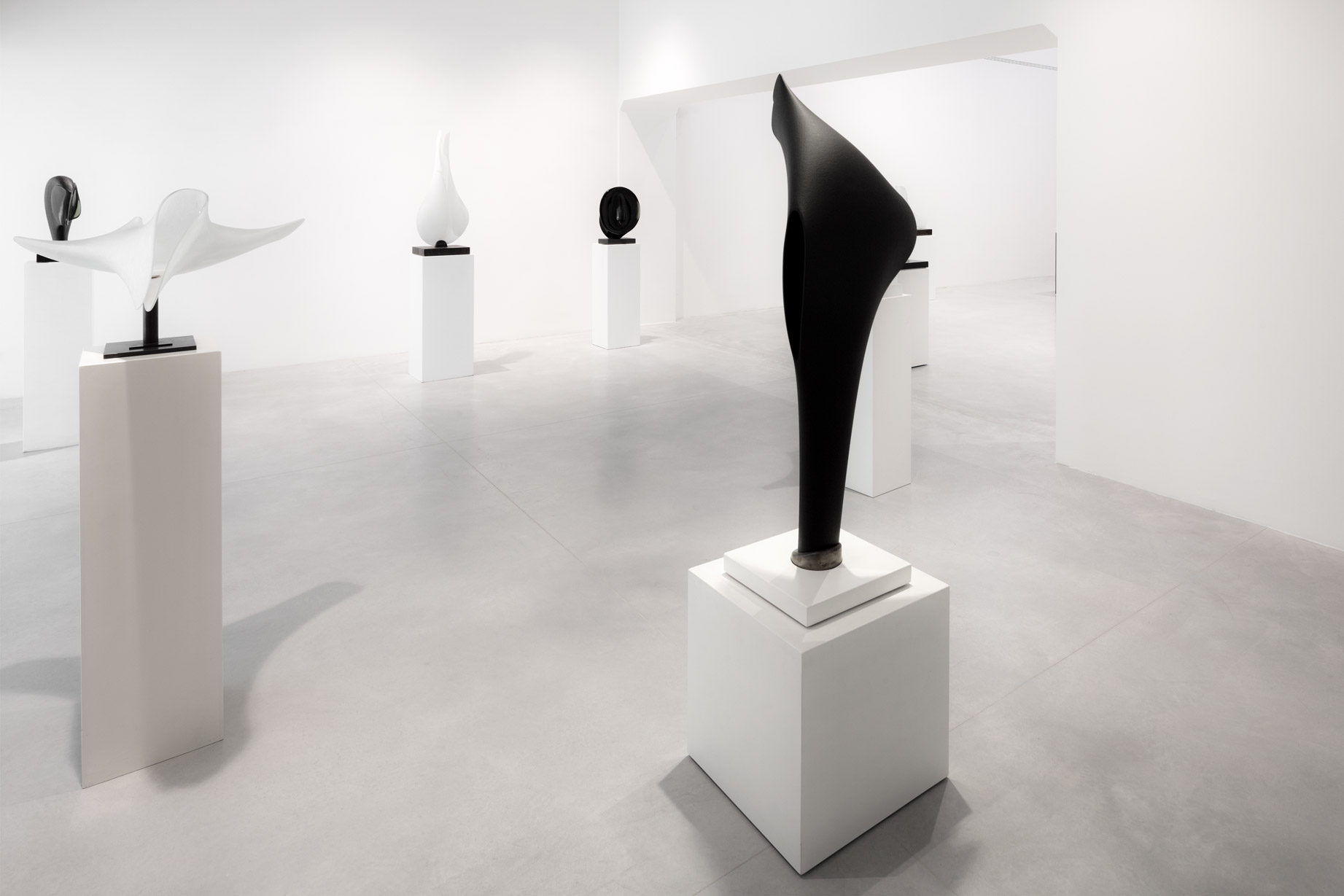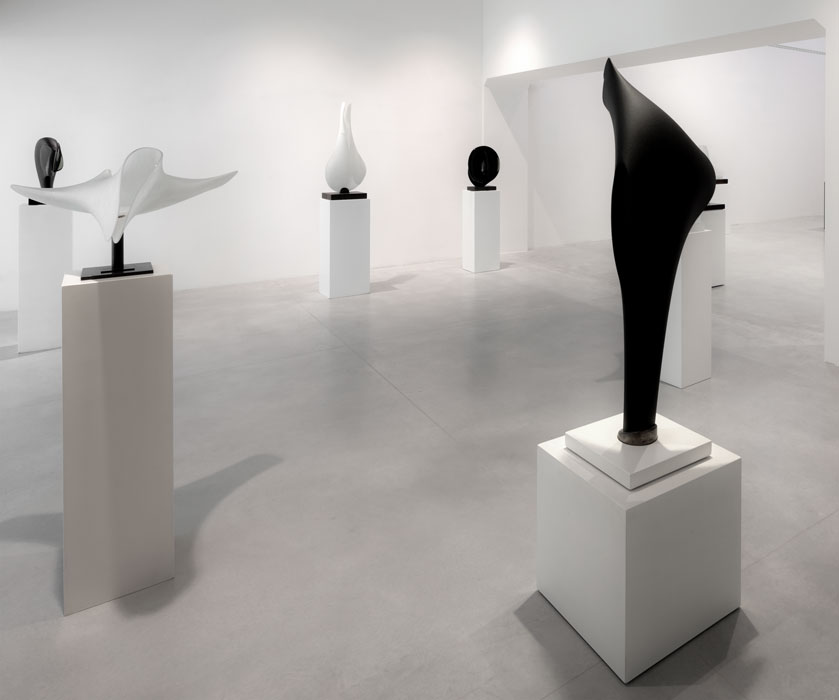
The Glass Museum is updated with Ideal Work’s Nuvolato Architop® flooring
The Murano Glass Museum, situated on the famous Venetian island of the same name, recently reopened to the public after a series of extensive renovation works. The project, which enlarged the museum by annexing part of a former industrial site known as the Conterie, involved the historic halls of Palazzo Giustiniano which have housed the museum since 1861, as well as part of the former glass bead factory next to the museum.
Preserving the historic architectural lines of the existing building, the interiors are decorated in an ultra-modern minimalist style. White is the dominant colour, illuminating the walls, ceilings and display stands. The floor adds to the sense of increased space and helps the exhibits to stand out. The material chosen for the floor is Ideal Work’s Nuvolato Architop® concrete, whose light and delicate shades harmonise with the space, offering an elegant and bright solution. The zinc colour chosen for the floor is a refined shade which is a perfect fit for the museum’s tasteful and minimalist spaces.
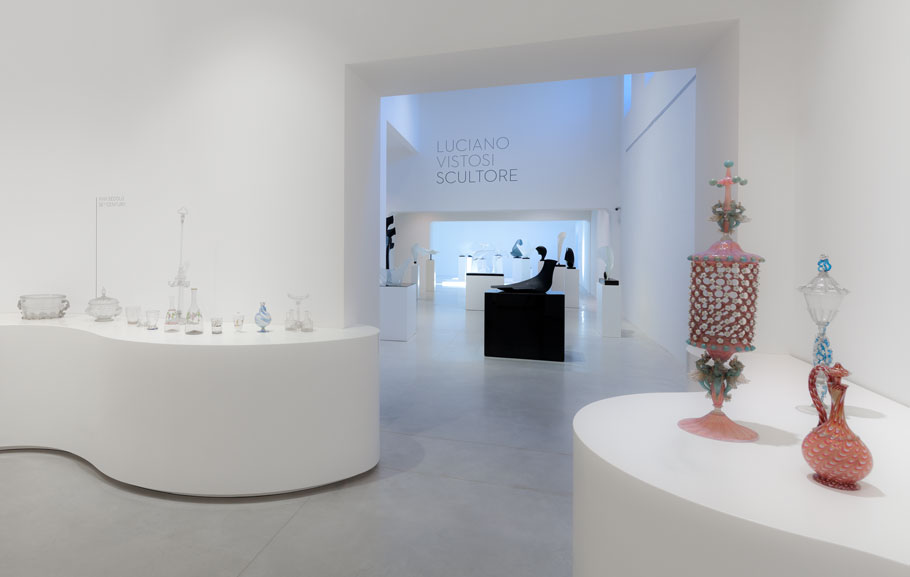
Ideal Work’s products were chosen not only for their aesthetic impact, but also for technical reasons linked to the renovation: with Architop®, a cement polymer, existing floors can be renovated with an incredibly thin layer (just 2-3 mm, a tenth of an inch), making them stronger and improving their appearance. Particularly suitable for renovation projects and surfaces which experience high levels of pedestrian traffic, Architop® gave a new lease of life to the museum’s surfaces, without having to remove the old floor and ensured a high degree of resistance to cold weather, chemical agents, abrasions and cracks.
Once Architop had been applied, the cloud effect was created as required by the designer, who requested a custom finish. Petrotex-S was then applied to make the surface stain-resistant. This protective treatment, which is oil and water-resistant, also reduces cracking and chipping and keeps the floor cleaner for longer. The surfaces will therefore remain intact over time with less maintenance.
Date: 2015
Place: Murano, Italy
Designer: Uffici tecnici della Fondazione Musei Civici di Venezia
Ph: Marco Zanta
